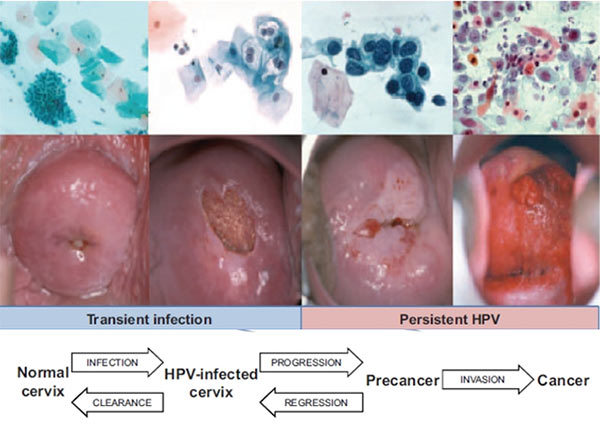Cervical cancer diagnoses and deaths to rocket in older women
Incidence of cervical cancer in young women is set to decline 75 per cent by 2040 with deaths close to eradicated, however older women will face greater risk according to research led by Queen Mary University of London, published today in The Lancet Public Health.
 Women aged 50-64 will see a 62 per cent increase in incidence which could lead to a 143 per cent rise in mortality (183 in 2015 to 449 in 2040).
Women aged 50-64 will see a 62 per cent increase in incidence which could lead to a 143 per cent rise in mortality (183 in 2015 to 449 in 2040).
Jo’s Cervical Cancer Trust funded and commissioned a team at Queen Mary University of London, including Peter Sasieni, Professor of Biostatistics and Cancer Epidemiology, and Dr Alejandra Castanon, Epidemiologist – who authored the research – to develop a new model that enabled the charity to explore incidence of cervical cancer in England up to 2040. This includes the impact of changing cervical screening coverage, and introducing both HPV primary screening and the 9-valent human papillomavirus (HPV) vaccine could have.
Cervical cancer is the most common cancer in women under 35 in the UK but, according to the model, this will shift dramatically by 2040 with the burden of the disease moving to older women. Among younger women, born after 1991 who have benefited from the introduction of the HPV vaccination programme in 2008, eradication of the cancer is firmly on the horizon.
The research finds that:
- Incidence among 50-54 year olds will increase 50 per cent (177 cases in 2015 to 265 cases in 2040)
- Incidence among 60-64 year olds will climb 54 per cent (144 cases in 2015 to 222 in 2040) and mortality 109 per cent (79 to 165 deaths a year)
- The introduction of more effective vaccination and screening test could see incidence more than halve among 25-44 year olds (1,313 cases in 2015 to 599 in 2040)
- Screening attendance is declining year-on-year, having fallen 3.4 per cent in England since 2012, and if it were to decline to 66 per cent (currently 72 per cent), among 60-64 year olds alone incidence will rise 71 per cent and mortality could rise 128 per cent.
While vaccination uptake is currently high, the research clearly highlights the importance of not being complacent as if uptake were to drop to 40 per cent, incidence in 25 to 44 year olds would increase by 38 per cent (to 945).
Dr Alejandra Castanon from Queen Mary said: “We used a novel method to estimate cervical cancer incidence rates up to 2040. It combines three levels of modelling making it very flexible. In contrast to a microsimulation model, our model can take into account how year of birth affects risk of cervical cancer throughout a woman’s life. In addition, the model is flexible in that we can change the screening coverage, the screening test and the vaccine type and observe their effect on cancer incidence. This study shows how the age-specific incidence of cervical cancer will change over the next 20 years. Women currently aged between 25 and 40 will remain at high risk of cervical cancer throughout their lives, whilst women younger than 25 will see their risk decrease by around 50%. This has implications for the way we invest in and target screening.”
Robert Music, Chief Executive, Jo’s Cervical Cancer Trust, said: “We are on the path to eradicating cervical cancer among young women which is extraordinary. However, we are faced with an immediate challenge among women who will be over 50 in 2040. This research should serve as a wake up call and the need for action. Continued declining cervical screening attendance will cost lives at all ages and must not happen. We are faced with an aging population and risk among older women rocketing, therefore changes to the programme which could reduce this risk must be explored, including increasing the screening age from 64 and self testing. We want to see cervical cancer become a disease of the past with no more women losing their lives to the disease. Jo’s Cervical Cancer Trust are today launching an ambitious new strategy to 2022 setting out our role in reaching eradication and call on others to join us.”
The model underlines how primary HPV screening will be of utmost importance in reducing risk of the disease among women born before 1991. The researchers and charity warn that delays in rolling it out will only exacerbate the burden of disease among this age group, and increasing screening coverage must remain a critical challenge and priority.
Source: Queen Mary University of London
Full bibliographic information:
Alejandra Castanon, Rebecca Landy, Francesca Pesola, Peter Windridge, Peter Sasieni. Lancet Public Health 2017
December 18, 2017




